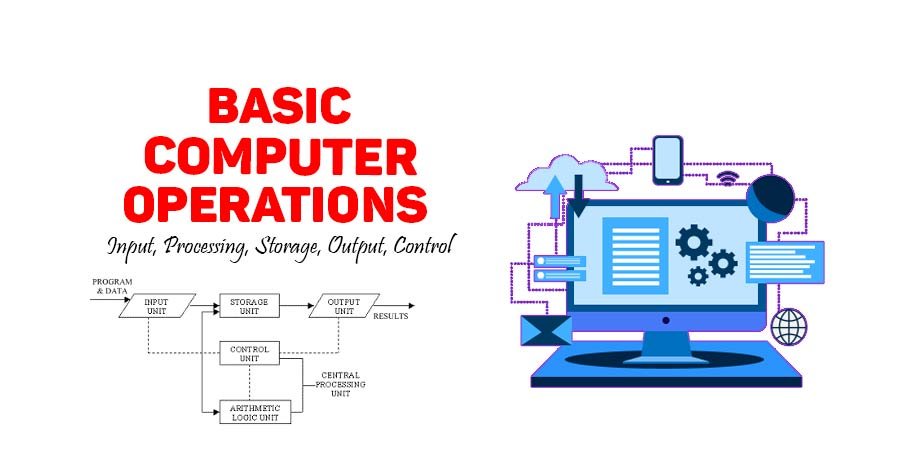What are the Five Basic Operations Performed by the Computer?
Updated: August 25, 2024
54
Imagine a world where every action, from typing a simple note to running complex simulations, hinges on a sequence of precise operations. This world is the realm of computers, where five fundamental processes input, processing, storage, output, and control work in harmony to transform raw data into meaningful results. These operations are the backbone of modern technology, enabling everything from everyday tasks to groundbreaking innovations.
Understanding these core functions not only reveals the magic behind the screens but also deepens our appreciation for the intricate dance of technology that powers our digital lives. Let’s dive into how these essential processes shape our computing experience.

Five Basic Operations Performed by the Computer Are:
1. How Computers Capture Your Input
Input is the initial step in a computer’s operation, involving the reception of data from external sources. This process allows users to interact with the computer by providing data through input devices such as keyboards, mice, scanners, or microphones. For instance, typing on a keyboard generates electrical signals that are transformed into digital data. The purpose of input is to supply the necessary information or commands that the computer will use for subsequent tasks. Without this step, the computer would not have the data required to perform any operations.
2. Unveiling the Magic of Data Processing
Processing follows input and is the stage where the computer performs operations on the data provided. The Central Processing Unit (CPU) is primarily responsible for executing instructions that manipulate or analyze the data. Processing can involve arithmetic calculations, logical operations, or complex data transformations. For example, when running a software application, the CPU processes user commands to achieve specific tasks such as calculations or data retrieval. This stage is crucial as it converts raw input into meaningful results, which can then be used for further purposes.
3. Safeguarding Your Data for Tomorrow
Storage is the process of saving data and instructions for future use. Data can be stored temporarily in Random Access Memory (RAM) while programs are running or more permanently on secondary storage devices like Hard Disk Drives (HDDs) or Solid State Drives (SSDs). Storage ensures that data and applications are retained even when the computer is turned off. For instance, saving a document on a hard drive allows you to access it later, long after the computer has been shut down. This operation is essential for preserving information and ensuring its availability over time.
4. How Computers Present Your Results
Output involves delivering the results of processed data to the user or other systems. The computer converts processed data into a format suitable for output devices, such as monitors, printers, or speakers. For example, the results of a computation might be displayed on a screen, or an audio file might be played through speakers. Output is fundamental as it provides users with the information or results they need, making it possible to interpret and utilize the processed data effectively.
5. The Controller: Directing Every Computer Task
Control is the overarching process that manages and coordinates all other operations within the computer. The control unit, part of the CPU, directs the sequence and manner in which input, processing, storage, and output are carried out. It interprets instructions from programs, sends signals to various components, and ensures tasks are performed in the correct order. Control ensures efficient and effective operation of the computer system, making sure all parts work together seamlessly to execute complex tasks. The CPU is known as the brain of computer.
Conclusion
In conclusion, the five fundamental operations of a computer as input, processing, storage, output, and control form the essential framework that drives modern technology. Each operation plays a crucial role in ensuring that data is accurately captured, efficiently processed, securely stored, effectively presented, and seamlessly managed.
Understanding these core functions not only unveils the complexity and precision behind everyday computing tasks but also highlights the intricate coordination required to bring our digital interactions to life. As technology continues to evolve, these foundational operations remain the backbone of innovation, enabling computers to perform a vast array of functions that impact our daily lives in profound ways.
Please Write Your Comments